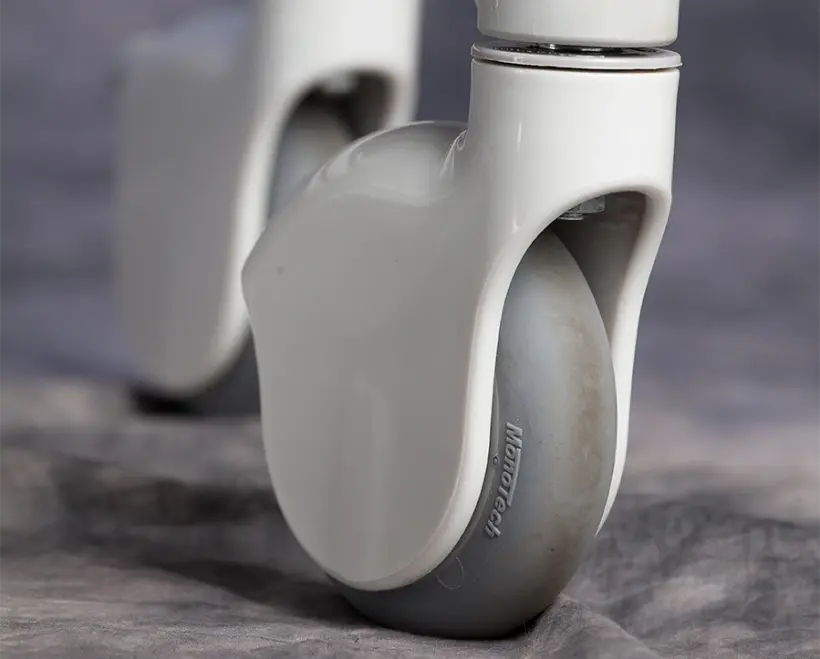It’s no secret that ease of maneuverability is a key component to medical cart success. Sometimes this can be especially challenging for inventory carts or for carts carrying heavy devices. All too often the first reaction is to change the casters, but we have found that is not always the best solution.
Rather, the first step in improving maneuverability is to evaluate all aspects of your current cart design and ask yourself these questions:
- How does the handle feel?
- Can I make my custom medical cart lighter in weight?
- Where will the medical device sit on my cart?
- Am I using the right casters or combination of casters for my medical cart?
How does the handle feel?
Have you ever tried lifting a heavy, five galleon bucket with just the metal handle—no plastic cover? Now, take that same pail and lift it with a plastic handle cover. The second one is much easier, right? Medical cart handles function in a similar way, especially with heavier carts. If your cart weighs more, consider implementing a handle that has a bigger diameter (within reason). A handle with a larger diameter minimizes the pressure on your hand by spreading the force over more surface area.
Can I make my custom medical cart lighter in weight?
You may not have any control over the weight of the device on your cart, but there are ways to make your cart lighter while maintaining its structural integrity. Consider integrating an aluminum column or a cast aluminum base. Plastic and structural foam are also excellent alternatives for making your cart lighter.
Where will the medical device sit on my cart?
Have you ever put something heavy on the end farthest away from the handle like a couple gallons of milk or a bag of cat litter? It can get pretty difficult to control the direction of your cart. The device placement on your custom medical cart may leave end users in a similar situation. You can optimize the ergonomics of your product by simply strategizing where the device sits.
Am I using the right casters or combination of casters for my medical cart?
Here's a list we've created with the best caster combinations for a variety of applications:
- To ensure your cart tracks straight down the hall and doesn't veer
- Two rigid casters and two total locking casters
- To maneuver in tight spaces
- Two swivel casters and two total locking casters or
- Four total locking casters, so your cart passes 60601 testing. Check out our 60601 video for unwanted lateral movement in non-transport mode part b to see an example of when four total locking casters would be necessary.
- If you need a cart that tracks straight AND maneuvers in tight spaces
- Two directional locking casters and two total locking casters
***Please note that these casters, while they have different applications, tend have a similar appearance, so the operator must understand when to implement each caster and how to differentiate between them.
If you're experiencing issues with custom cart ergonomics, contact us and we'll have your solution underway.


